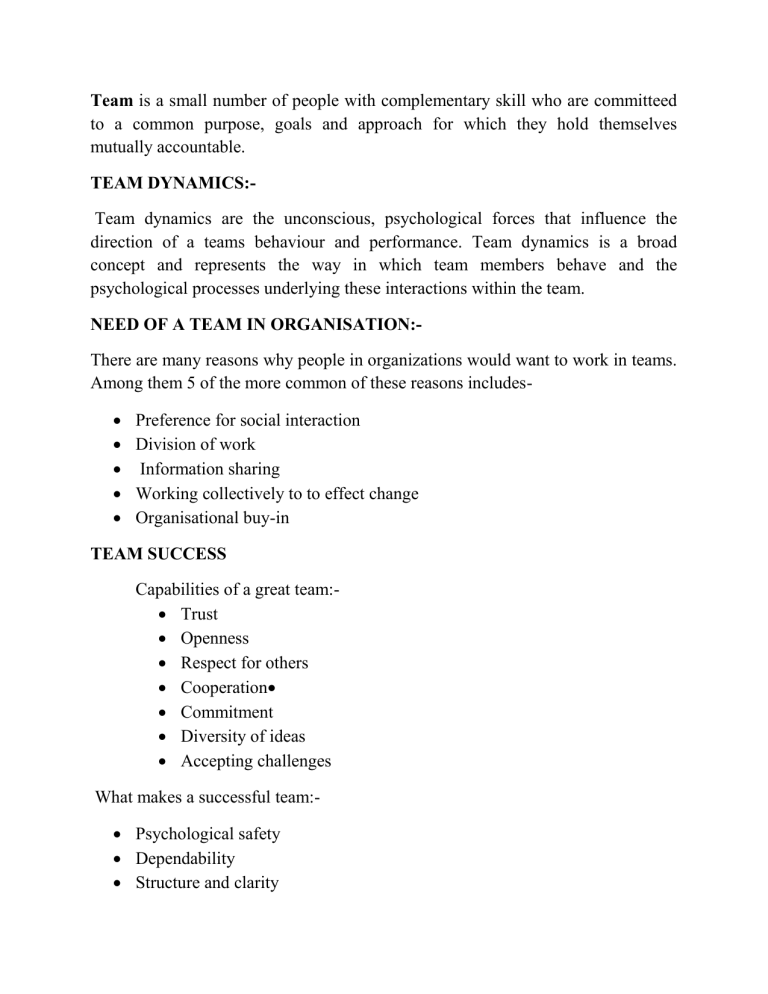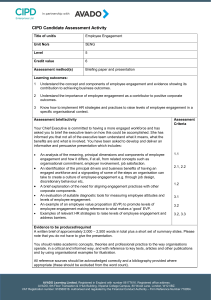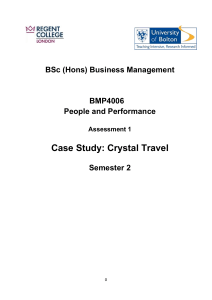Teams, Dynamics, and Building: A Comprehensive Overview
advertisement

Team is a small number of people with complementary skill who are committeed to a common purpose, goals and approach for which they hold themselves mutually accountable. TEAM DYNAMICS:Team dynamics are the unconscious, psychological forces that influence the direction of a teams behaviour and performance. Team dynamics is a broad concept and represents the way in which team members behave and the psychological processes underlying these interactions within the team. NEED OF A TEAM IN ORGANISATION:There are many reasons why people in organizations would want to work in teams. Among them 5 of the more common of these reasons includes Preference for social interaction Division of work Information sharing Working collectively to to effect change Organisational buy-in TEAM SUCCESS Capabilities of a great team: Trust Openness Respect for others Cooperation Commitment Diversity of ideas Accepting challenges What makes a successful team: Psychological safety Dependability Structure and clarity Meaning of work Impact of work Characteristics of a successful team: Clear goals Relevant skills Mutual trust Unified commitment Good communication Negotiating skills Conflict management Internal and external support Leadership Organisational culture Purpose of teams:The purpose of creatin’g teams is to provide a frame work that will increase the ability of employees to participate in planning, problem solving and decision making to better performance and goal achievement. The team promotes: A better understanding of decisions. More support and participation in implementation plans. Increased contribution to problem solving and decision making. Improved employee motivation. Positive synergy Satisfaction of social needs. Organisational flexibility. GROUP VS TEAM GROUP: A collection of two or more interacting individuals who maintain stable patterns of relationships, share common goals and perceive themselves as being a group. TEAM: A team is a small number of people with complementary skill who are committed to a common purpose , performance , goals and approach for which they hold themselves mutually accountable. TEAM AND ITS TYPES:1.Permanent Teams. This teams perform on a permanent basis and are not dissolved once the task is completed. 2.Temporary Teams. This type of teams loose their importance once the task is accomplished. Such teams are usually formed for a shorter duration either to assist the permanent team or when the organisation have excess work in association with the previous team. 3.Task force. Such teams are formed for a special purpose of working On any specific project or finding a solution to a very critical problem. The task force explores all the possible reasons which led to a severe problem and tries to resolve it within given time. 4.Committee. Committees are generally formed to a work on a particular assignment either permanently or on a temporary basis. Individuals with common interest , more or less from the same background , attitude come together on a common platform to form a committee and work on any matter. 5.Organisatioanal /work force. Such groups are formed in organizations where team members work together under the expert guidance or leadership. 6.Self managed teams. Self managed teams consists of individuals who work together for a common purpose but without the supervision of any leader.’ 7.Cross functional teams. In this type of team individuals from different areas come and work together for a common objective to form a cross functional team. 8. Virtual teams. Virtual teams consists of individuals who are separated by distance and connected through computer. Here team members communicate with each other online through internet. ‘TEAM DEVELOPMENT. Team development creates a captivating atmosphere by encouraging cooperation, team work, interdependence and by building trust among team members. Phases of team development. 1. Forming :- This stage involves a period of orientation and getting acquainted. Uncertainty is high during this stage and people are looking for leadership and authority. Most interactions are social as members get to know each other. 2.Storming:- This is the most difficult and critical stage to pass through. It is a period marked by conflict and competition as individual personalities emerge . Team performance actually may decrease in this stage because energy is put into unproductive activities. 3.Norming. In this stage consensus and cooperation have been well established and the team is mature , organized and well functioning. There is a clear and stable structure and members are committed to team’s mission. The team is now focused on problem solving and meeting team goals. 4.Adjourning. In this stage most of the teams goal have been accomplished. The emphasis is on wrapping up final task and documenting the efforts and results. As the work load diminished, individual members may b re assigned to other teams and the team disbands. There may be a regret as the team ends so a ceremonial acknowledgment of the work and success of the team can be helpful TEAM BUILDING:Team building refers to the various activities undertaken to motivate the members and increase the overall performance of the team. Need of Team building. Team building activities are utmost importance as they help in the overall development of the team members and in turn improving the teams performance. It also strengthens the bond among the employees and they feel motivated to work and achieve the targets. Team building exercises. One must know his/her fellow team members well. The team members must be compatible with each other Include ice breaking activities in the team. Encourage many trust building exercises in the team. Team members must trust each other for the maximum output. Encourage activities where individuals come together as a single unit and work for a common task. Importance of team building. Team work and team building are essential in corporates to make the organization a better place to work. Team building activities improve the relations and strengthen the bond among the employees. It also reduces the chances of confusion, misunderstandings and in a way making the communication effective. Individuals feel more confident and positive at work. TEAM PROCESS: Team process refers how the team functions i.e how members work to carry out the mission and goals of the team and whether the team and the members grow, develop and improve over time. Process influence and is influenced by both team structure and context. Interactions that occur among team members while performing the team task and combine individual efforts into collective results. Steps of team process. Ability to influence Accountability Bias for action Collaborating with others Communication Directiveness Flexibility Interpersonal understanding Networking ability Organisational awareness Self regulation Team leadership Team work TEAM COOPERATION AND COMPETITION. Cooperation: It refers to the attempts of maximizing the collective outcomes. Competition: It refers to the attempts of maximizing the difference with others in rivalry for supremacy or prize. Cooperation and competition are often conceptualized as products of social interdependence. Thus for both cooperation and competition there must be more than one individual or entity involved and the individuals they must be able to influence each other that is the change in one’s action causes a change in others outcomes.






